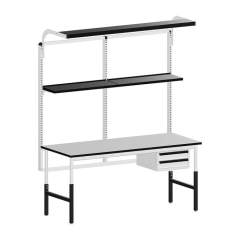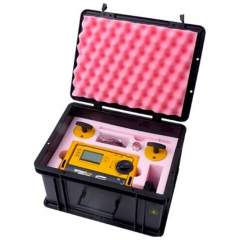Enhancing Industrial Efficiency with Bosch Rexroth Systems
Enhancing Industrial Efficiency with Bosch Rexroth Systems
Blog Article
Innovative Solutions with Bosch Rexroth's Cutting-Edge Technology
Soldering is in the centre of modern technology, linking the tiniest components on sophisticated signal boards. As products shrink and their complexity rises, the demand for precision, efficiency, and reliable answers in soldering has never been soldering station (lötstation) higher. This is wherever advanced soldering techniques and tools step in, transforming the landscape of technology assembly.

Advanced Soldering Practices
Soldering is just a process applied to participate two items of steel together by melting a filler substance, named solder, between them. Typically, this was done employing a hot metal and manually applying the molten solder.
Nevertheless, with the increasing need for accuracy and efficiency in technology assembly, new advanced types of soldering have emerged. These strategies provide improved control, reliability, and repeatability, creating them crucial in modern electronics manufacturing.
Floor Install Engineering (SMT)
Area support engineering (SMT) involves connecting electronic parts directly onto the outer lining of a published signal board (PCB).
Moving the Soldering Landscape
During the last decade, miniaturization in consumer electronics has improved by nearly 65%, driving manufacturers to embrace smarter approaches. Parts like microprocessors and multi-layer panels require identify precision that old-fashioned soldering only can't guarantee. That's why skilled experts are going towards advanced temperature-controlled soldering programs and intelligent soldering tools.
New market studies reveal a 401(k) increase in opportunities toward wise soldering solutions between 2019 and 2023. Operating factors are the need for high-performance technology, specially in the medical, automotive, and aerospace sectors.
The Increase of Heat Precision
One important development may be the use of soldering answers that provide real-time temperature control. Data details to a 35% reduction in failure costs whenever using temperature-regulated soldering irons compared for their mainstream counterparts. These methods immediately adjust and keep temperature levels, avoiding solder cool bones or overheating delicate components.
Professionals report that adapting to these systems decreases rework time by nearly 25%, more focusing the economic and generation benefits.
Better Tools for Better Work
Yet another trend may be the transfer towards ergonomic, user-friendly soldering stations. Surveys among electronics professionals indicate that 72% prefer methods with fast-heating recommendations, digital shows, and programmable profiles. This change isn't no more than performance; ergonomic style significantly reduces office injuries and weakness, major to higher productivity.
Complicated electronic careers today frequently require precision at the micron level. Sophisticated soldering pencils with programmable feedback and micro-tweezers have swiftly become essential. Statistical reviews from large construction firms display up to a 50% boost in first-pass produces after establishing these advanced tools.
The Rising Affect of Data in Soldering

Industry data show a fivefold escalation in the usage of data-enabled soldering stations over the past five years. By logging heat, idea living, and also driver actions, these wise techniques provide actionable insights. Quality control teams influence this information to tighten functions, considerably reducing the deficiency rate across production lines.
Seeking Forward in Complex Technology Assembly
The electronics industry's battle towards better, smaller, and more complex models will simply improve needs on soldering. Trending data obviously highlight how contemporary, clever soldering options are now actually a foundation for high-quality electronics.
For designers, keeping forward suggests understanding and adopting these next-generation tools and workflows. The information is clear: people who spend money on smarter soldering options may lead the way in performance, consistency, and successful manufacturing for the following wave of complex electric devices. Report this page